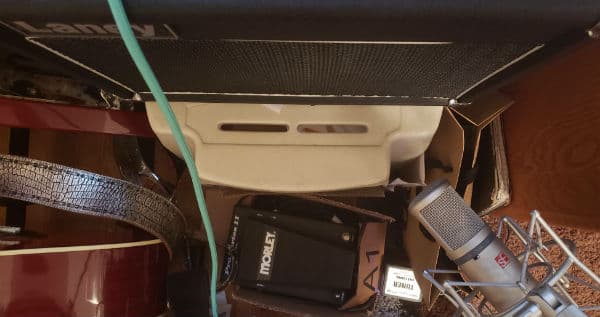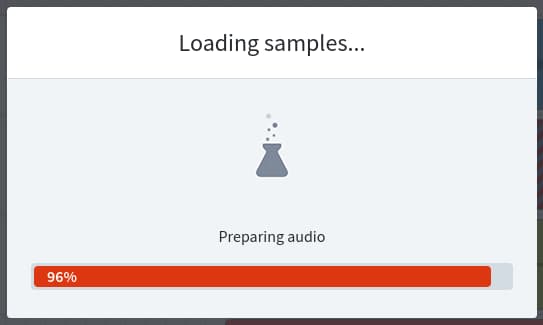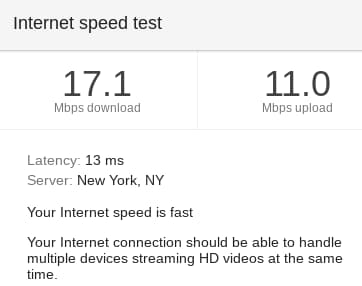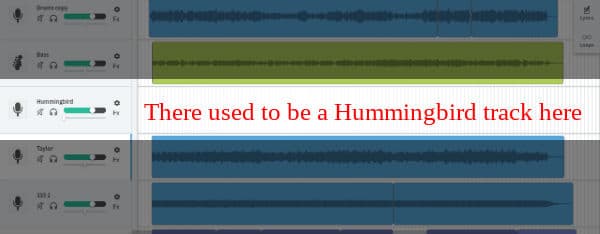Electric guitars is where things get noisy, and Alroight Bab starts to sound like a rock ‘n’ roll song. However, this part of the recording process has been a nightmare.
Electric guitars: rig run down
- ASUS Chromebook Flip C100PA
- Samson Studio GT monitors
- Beyerdynamic DT-100 headphones
- SE Electronics 2200a
- 1996 Dean USA Z
- 1996 Gibson ES-335
- 2007 Fender American Standard Stratocaster
- Laney VC15-110
- Zinky Smokey
- Hotone Tuner
- Ibanez Tube Screamer Mini
- Electro-Harmonix Op-Amp Big Muff Pi
- TC Electronic Flashback Mini
- Pig Hog guitar cables
- Unbranded XLR cable
- Jim Dunlop Gator Grip 1.14mm picks
- Electric guitar strings: Ernie Ball Regular Slinky
- Unbranded XLR cable
That’s the most extensive rig run down so far!
Recording
I have a go-to way of recording electric guitars, based on the tonal qualities of each instrument, and the general “lows on verses; highs on choruses” approach.
As a result of which, which guitar, amp, what I play, and why, is outlined below. The order they’re listed in is the order I record them in.
| Gibson ES-335 |
|
|
| Dean Z |
|
|
| Fender American Standard Stratocaster |
|
|
| Fender American Standard Stratocaster |
|
My amp settings are based on James Dean Bradfield’s from the Manic Street Preachers, due to an issue of Total Guitar in the nineties, and I’ve consequently stuck with: bass at four, mids and treble at six.
Furthermore, on my Laney, I set the tone knob to five – completely middle of the road – and the drive to six. It’s dirty, but not filthy.

In terms of mic placement, I really just pointed my 2200a at my Laney, at a 45 degree angle, pointed between the rim and center of the speaker, about six inches away.

So, is it the best positioning? I don’t know, but I’ve always been happy with it.
The nightmare begins
I had a spare hour before I had to leave for vacation so I thought, “I’ll get started on electric guitars, and hopefully I’ll at least get the 335 done.”
Therefore, I set up guitars and mics, loaded up BandLab, opened the Mix Editor for Alroight Bab, and hit record.
It didn’t save.
At first I thought I’d accidentally deleted it, so I indulged in some Ctrl+Z. Nothing. I consequently thought I was going nuts. So, I recorded it again, paying more attention, and the same thing happened. And then again.
I consulted Google on the matter, which told me that it can happen if internet connection is weak. A selection of bad words ensued. I knew our internet connection could be patchy, but I didn’t have time to keep trying right now.
Next attempt
Back from vacation, I went through the same process. I managed to record the 335.
However, after that, everything turned to pretty much awful. The Mix Editor struggled to load. It would load up to maybe 92%, then just stop. Other times, the page wouldn’t load at all. I essentially spent 24 hours bouncing between these.


An internet speed test concluded that it was fast.

First of all, I tweeted at BandLab, but didn’t get a response for a couple of days. Of course they responded telling me to email their support team within three minutes of me emailing their support team.
Eventually, I manage to get all my electric guitars recorded: the 335, the Z, and the Strat through the Smokey. However, it took days, bouncing between those screens. I was – and still am – pretty pissed off by it.
Light audio recording is supposed to be quick and easy. However, this was not.
After another period of far too long, I got the guitar solo recorded.
Farewell, sweet Hummingbird
However, the Hummingbird track didn’t load. The track was shaded with diagonal lines, and I assumed that just meant that it couldn’t be load, but it would be fine.
Nope. It deleted it. Hence more bad words ensued.

I spent two days trying to rerecord it through shitty loading. However, it did that thing where it wouldn’t save after recording it.
Eventually, I decided to go back to the version from I recorded the acoustic guitars, and export just the Hummingbird, so then I could import it to the ongoing one.
Nope. I got an error message saying it wouldn’t import. And then more crashing.
Conclusion
| Pros | Cons |
|---|---|
|
|
So, technically, I achieved what I set out to do in this step of the recording process. The electric guitars are certainly recorded.
However, the cost has been great, particularly in terms of time. As a result, it took a week to cobble together something that seems unusable.
Consequently, my current line of thought involves exporting the individual tracks, creating new projects in BandLab to mix each section and bounce them down, e.g. both acoustic guitars on one track, all the electric guitars on another track, etc.
Finally, this is what I have to go from for recording vocals. For which I’ve bounced all this down to one track. More on that in the next recording post.
If you found this helpful, subscribe on the right hand side of this page. You’ll be notified when new posts go live on Thursdays, so you can be inspired ahead of the weekend. Also, feel free to shoot me a coffee!